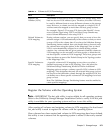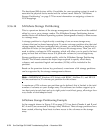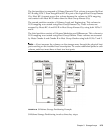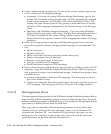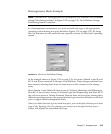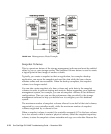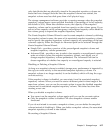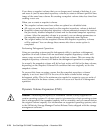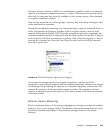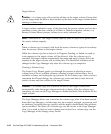
3-78 Sun StorEdge 5310 NAS Troubleshooting Guide • December 2004
If you have a snapshot volume that you no longer need, instead of deleting it, you
can reuse it (and its associated repository volume) to create a different point-in-time
image of the same base volume. Re-creating a snapshot volume takes less time than
creating a new one.
When you re-create a snapshot volume:
■ The snapshot volume must have either an optimal or a disabled state.
■ All copy-on-write data previously on the snapshot repository volume is deleted.
■ Snapshot volume and snapshot repository volume parameters remain the same as
the previously disabled snapshot volume and its associated snapshot repository
volume. After the snapshot volume is re-created, you can change parameters on
the snapshot repository volume through the appropriate menu options.
■ The original names for the snapshot volume and snapshot repository volumes
will be retained. You can change these names after the re-create option is
completed.
Performing Defragment Operations
Using an operating system-specific defragment utility to perform a defragment
operation on a base volume with an associated snapshot repository volume will
cause a copy-on-write of every data block in the base volume. This can cause the
snapshot repository volume to fill before the defragment operation is completed.
As a result, the snapshot volume will fail or host writes will fail to the base volume,
depending on the Snapshot Volume Full condition that was originally set for the
snapshot volume.
To prevent this from occurring, ensure that the snapshot repository volumes'
capacity is set to at least 105% of the size of the base volume before using a
defragment utility. This is the minimum size needed to support a copy-on-write of
every data block in the base volume, which will occur as a result of a defragment
operation.
Dynamic Volume Expansion (DVE)
Caution – Increasing the capacity of a standard volume is only supported on
certain operating systems. If volume capacity is increased on a host operating system
that is unsupported, the expanded capacity will be unusable, and you cannot restore
the original volume capacity. For information on supported operating systems, refer
to the SANtricity Storage Manager Product Release Notes shipped with the storage
management software.




